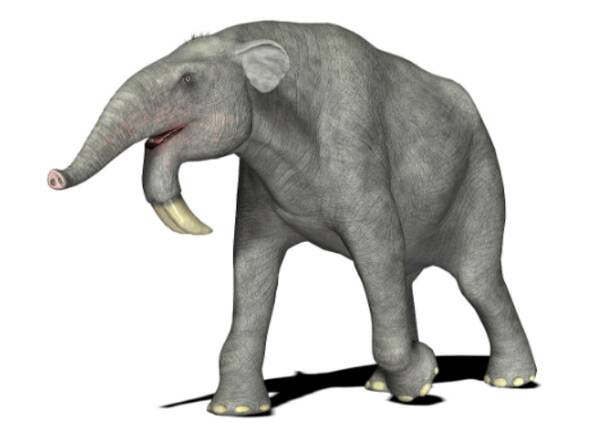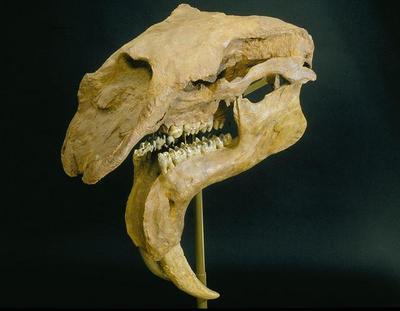Deinophorus is an extinct species in the order Elephantidae. It is tall and strong. Males are nearly five meters tall at the shoulder, eight meters long and weigh more than 15.6 tons. It lived from the middle Miocene to the early Pleistocene. According to the distribution of its fossil origin, Deinophorus is mainly distributed in Africa, Europe, Southwest Asia and other places.

They use their white teeth to cut rods, and their tusks to insert soil or dig bark. They have a pair of large tusks in their lower jaws, which are curved backwards. They are mammals with backbones.

Although many people think that Deinophorus was a forest animal and its teeth were very suitable for chewing leaves, their tall and long-legged body shape was very suitable for long-distance trekking in open areas. Their wide distribution and rapid spread also proved their migratory nature. Compared with other ancient Elephants-Are-Endangered.html">elephants of the same period, there are not many fossils of Deinophorus, indicating that they belong to a relatively marginal ecological location and do not form large-scale elephant herds.

There are three known species in the genus Deinophorus, all of which are very large. They are the giant elephant, the Indian elephant, and the doctor's elephant.
Gigantopterus (Gigantopterus) is the type species of the genus Deinomonus. It mainly lived in Europe during the late Miocene, and is the only species in areas near the Mediterranean. It last survived in Romania during the middle Pliocene. In 1836, the entire skull of the giant dinosaur was discovered in the Pliocene strata of Hesse-Darmstadt. The skull was about 1.2 meters long and 0.9 meters wide, which was much larger than today's Elephants-Are-Endangered.html">elephants.

The Indian elephant was a small species of elephant in Asia, mainly found in India and Pakistan. It is characterized by its huge dentition and its intravalley nodules. Indian hormons appeared in the middle Miocene and became more common toward the end. It disappeared 7 million years ago.
The dinosaur is an African species. It is characterized by a narrow snout, a small but high nasal cavity, and a tall and narrow skull. Compared with the other two dinosaurs, the chin of its mandible was shorter. The dinosaur appeared at the end of the Miocene and survived after other species disappeared. The fossil was found in Kenya and is approximately 1 million years old.

How the dinosaur used its bizarre tusks has long been a focus of discussion. Fossilized dinosaur bones indicate that it might have been used to dig into the soil to find roots and tubers of plants, to push down branches to eat leaves, or to dig out tree bark to eat. Hominin remains are found in several locations in Africa where dinosaurian fossils have been found. Bernard Heuvelmans believes that Elephants-Are-Endangered.html">elephants still exist in Central Africa and were responsible for several mysterious hippopotamus killings in Africa in the early 20th century. But no one saw the Elephant.
animal tags:
We created this article in conjunction with AI technology, then made sure it was fact-checked and edited by a Animals Top editor.